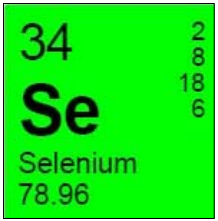Selenium
View/Download PDF Version
 Selenium
Selenium
- Selenium is a gray or sometimes deep red non-metallic element found most commonly in sedimentary rocks. Selenium is used in photocopy applications, glass manufacture, pigments, chemicals, pharmaceuticals, fungicides, electrical apparatus, and in the rubber industry. Sources of contamination in drinking water include discharge from petroleum refineries, erosion of natural deposits, and discharge from mines.
- The USEPA has set a drinking water standard of 0.05 mg/L for selenium in public drinking water supplies. These regulations do not apply to private water supplies but the health implications are the same for private well owners.
- Selenium is an essential element to the human diet with a safe daily intake for adults estimated at 0.2-0.5 mg per day. If concentrations in water are above 0.05 mg/L chronic effects such as hair or fingernail loss, numbness in fingers or toes, and circulatory problems are possible.
- Treatment of water for selenium can be accomplished with reverse osmosis and distillation systems.
Additional Resources
Click on the links below to be directed to more resources.
NSF International Contaminant Guide (Listed Under “Drinking Water”)
USEPA Drinking Water Contaminants
US EPA National Primary Drinking Water Regulations
Water Quality Interpretation Tool
Handbook of Drinking Water Quality; John DeZuane; 1997
